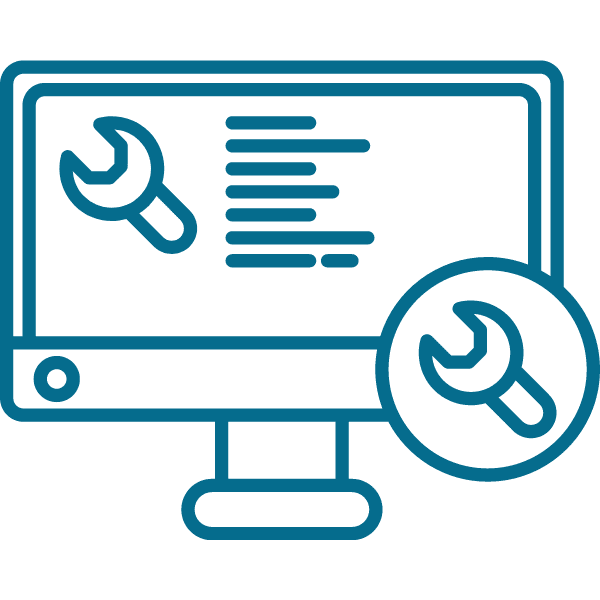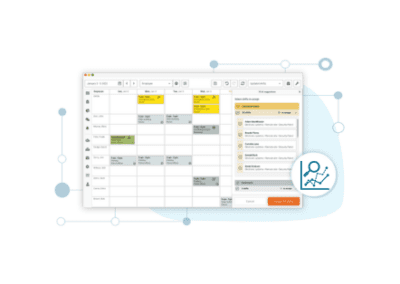Project scheduling is a crucial aspect of project and workforce management that plays a vital role in ensuring project success. It helps to keep projects on track, keep stakeholders informed, and ensure that resources are allocated appropriately. Project schedules can be used for planning, development, maintenance, and control of a project. In this blog post, we will explore the various stages involved scheduling in project management. These include the planning, development, maintenance, and control of project schedules.
Planning of Project Schedules

Scheduling in project management is the process of defining a project in detail and creating a plan for when and how it will be completed. The planning stage is where the project schedule is initially created. It is essential to understand the scope of the project and the activities involved. You should also be aware of the resources required to complete the project. A work breakdown structure (WBS) is essential to scheduling in project management. It is often used to break down the project into manageable tasks.
Once the WBS is created, the project team can begin to estimate the time required to complete each task. The duration of each task should be estimated based on the resources required, the complexity of the task, and any potential risks or constraints that may impact the task.
The project manager should also identify any dependencies between tasks. Understanding the dependencies between tasks is crucial because it will help to determine the critical path of the project. The critical path is the sequence of tasks that must be completed on time to ensure the project is delivered on schedule.
Development of Project Schedules
Once the planning stage is complete, the project schedule can be developed. The schedule should include all of the tasks required to complete the project. It’s also vital to include their estimated durations, and any dependencies between tasks. The schedule should also include the start and end dates for each task.
There are several tools that can be used to develop project schedules, such as Gantt charts or network diagrams. Gantt charts are a visual representation of the project schedule, and they can help to identify the critical path of the project. Network diagrams are another tool that can be used to develop project schedules. They are useful for identifying the dependencies between tasks.
When it comes to scheduling in management, it is essential to involve the project team in the development of the project schedule. The project team members will have a better understanding of the tasks involved, and they can provide valuable input into the estimated durations of each task. By involving the project team, the project schedule will be more accurate and realistic.
Maintenance of Project Schedules

Once the project schedule is developed, it is essential to maintain it throughout the project. Maintenance is essential for scheduling in project management. The project schedule should be updated regularly to reflect any changes that occur during the project. The project manager should monitor the progress of the project to ensure that it is on track.
There are several reasons why a project schedule may need to be updated. For example, if a task takes longer than expected, it may impact the schedule of subsequent tasks. Alternatively, if a new task is added to the project, it may need to be added to the project schedule.
The project manager should also communicate any changes to the project schedule to stakeholders. It is essential to keep stakeholders informed of any changes to the project schedule because it will impact their expectations of the project.
Control of Project Schedules
The control stage is where the project manager ensures that the project stays on track. The project manager should compare the actual progress of the project to the project schedule regularly. If there are any deviations from the project schedule, the project manager should take action to bring the project back on track.
There are several techniques that can be used to control the project schedule. For example, if a task is behind schedule, the project manager may assign additional resources to that task to bring it back on track. Alternatively, if a task is ahead of schedule, the project manager may use the extra time to complete other tasks that are behind schedule. Getting this balance right is essential for effective scheduling in project management.
The project manager should also monitor the critical path of the project. If a task on the critical path is behind schedule, it may impact the overall project schedule. The project manager should take action to ensure that the critical path is on track. It is also essential to communicate any changes to the project schedule to stakeholders, as this will help manage their expectations and keep them informed.
Using Scheduling Software for Project Management

So, project scheduling is a critical aspect of project management that should not be overlooked. The planning stage is where the project schedule is initially created, the development stage is where it is refined and finalized, and the maintenance stage is where it is updated regularly throughout the project. The control stage is where the project manager ensures that the project stays on track and takes action if deviations occur. Similar to employee scheduling, project scheduling can be made easier and faster with the right software. There are countless options to choose from, but it is important to look for a solution that suits your organizational needs.




